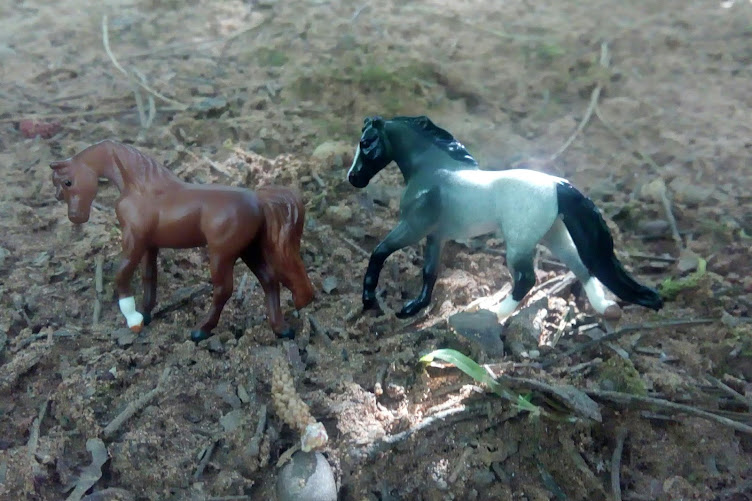You may have heard by now that Utterly Horses is sadly closing
down at the end of this year.
For almost 2 decades they have been one of the biggest
and best model horse shops in the UK, especially online. Their service is
unbeatable, their dedication is profound and their presentation is the best I’ve
ever seen. Their almost exclusive focus on model horses has made them one of
the best sellers of Breyer and Schleich model horses in Britain, and if it wasn’t
for them I would have never discovered the CollectA brand. I adored the fact that
they gave names to all the previously unnamed models. You weren’t just buying
the Schleich Dartmoor Pony Mare; you were buying “Thistle the Dartmoor Pony
Mare”. Their delivery was always prompt, their boxes were always safely and
well packed, and I loved the fact that they wrapped each individual model in
purple tissue paper and even included fun horse themed confetti in the
packaging too. That extra mile made it
even more rewarding and exciting to receive a package with new models in.
I first came across Utterly Horses through a link in a
model horse fan site in about 2008 or so. I don’t remember doing so but I must
have signed up for an account with them because a little while later I received
their lovely glossy catalogue through the mail, which was a nice surprise.
Flicking through that catalogue I was amazed at the variety and availability of
all the wonderful horsey models they had for sale and it wasn’t long before I
was a loyal customer. All the extra effort they put in to the packaging and
delivery convinced me to buy my models from them, and I only shopped elsewhere
if I wanted a model that Utterly Horses didn’t stock. The only downside was not
being able to see the models for myself, but that’s true of any online shop,
not just them.
Utterly Horses even launched their own mini
Breyerfest-like event for UK hobbyists, appropriately titled the Utterly Horses
Hullabaloo. Unfortunately I was never able to attend the event, as much as I
would have loved to, but I know many, many hobbyists loved it. It was just so
nice to have an event for collectors in Britain, many of whom would never be
able to attend the official Breyer hosted event in America. It made us feel
included, appreciated, not forgotten about or ignored because we happened to
live on the other side of the Atlantic. It made us feel connected, and that’s
all thanks to Utterly Horses.
I always found Utterly Horses to be polite, considerate
and happy to help me as the customer. When something I bought was sold out they
immediately rang me to let me know and arranged a refund or replacement. I
loved the fact that they stocked all kinds of brands, from Breyer to Schleich,
CollectA to Sugar Cubes, and their little extras like horsey pencils and hobby
supplies such as acrylic paint and tack making materials made them the ultimate
source for model horse shopping in the UK. So it’s crushing to see them go at
the end of 2015. Utterly Horses will be sadly and greatly missed, and I can
only hope another model horse shop will step in to fill the void.
We won’t forget you, Utterly Horses. The Copperfox
project will still continue, and I wish the whole team the very best in their
future endeavours. There is no doubt they will be greatly missed by UK and
international hobbyists alike. Thank you, Utterly Horses, for everything you’ve
done for us all.













































